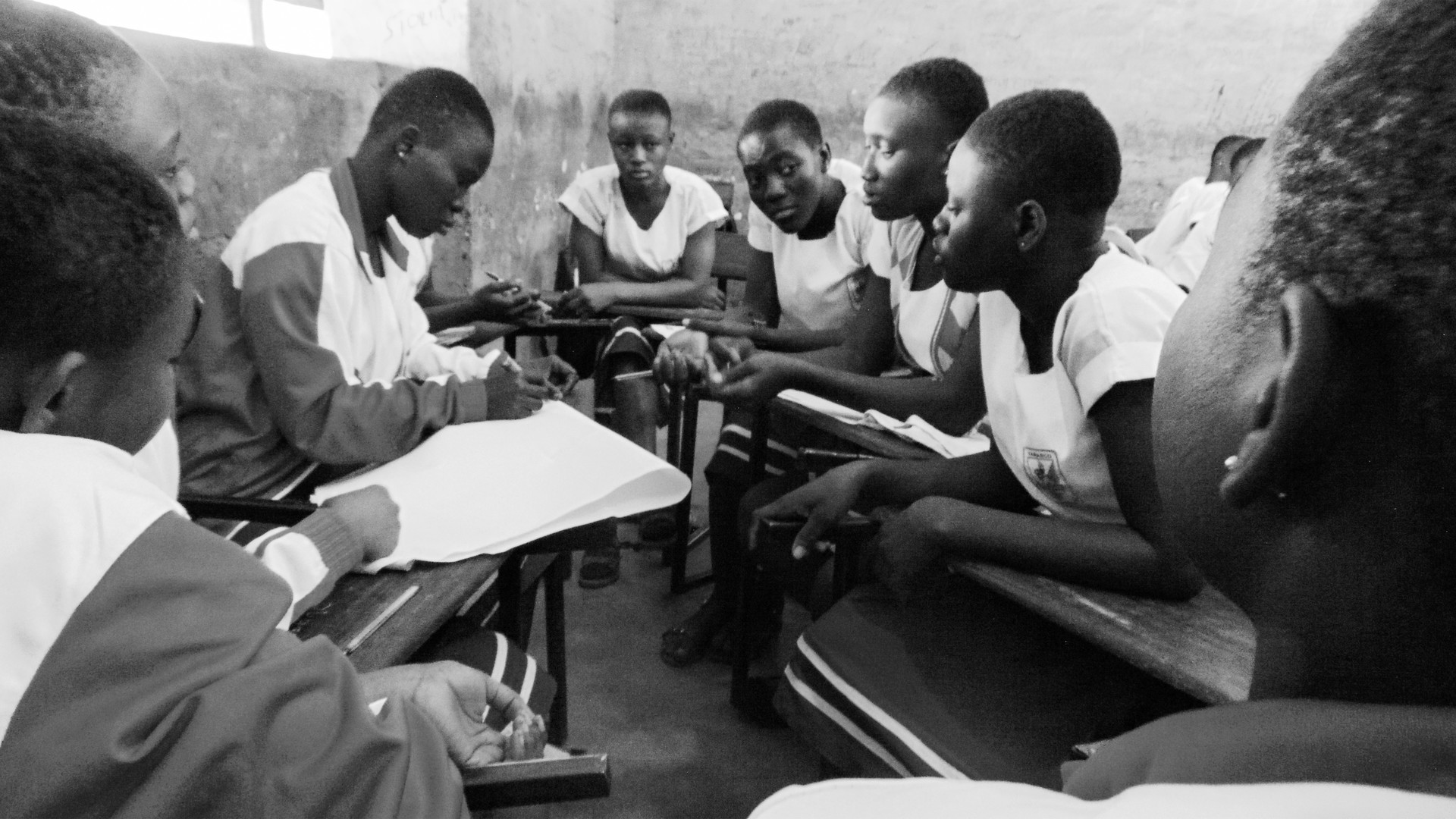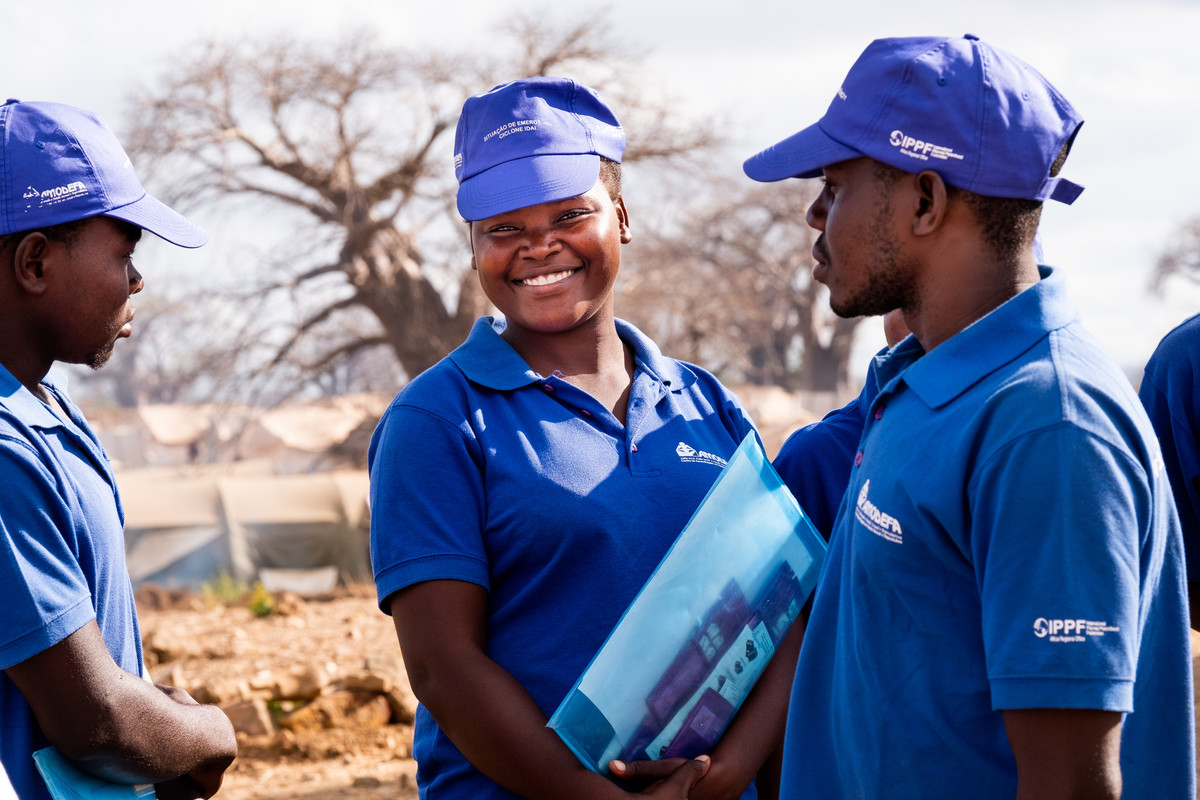Spotlight
A selection of stories from across the Federation
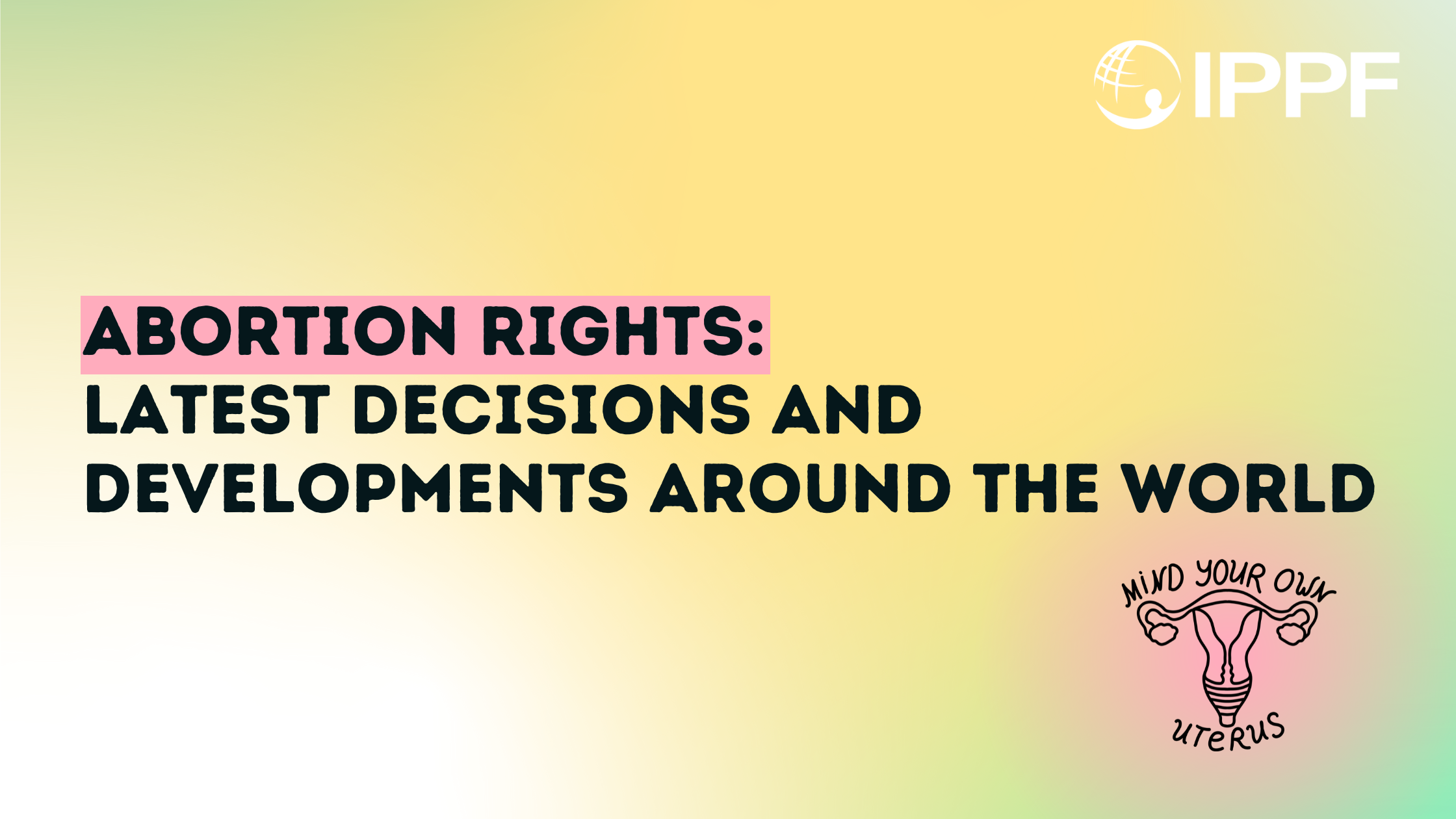
France, Germany, Poland, United Kingdom, United States, Colombia, India, Tunisia
Abortion Rights: Latest Decisions and Developments around the World
The global landscape of abortion rights continues to evolve in 2024, with new legislation and feminist movements fighting for better access. Let's take a trip around the world to see the latest developments.
Most Popular This Week
France, Germany, Poland, United Kingdom, United States, Colombia, India, Tunisia

Abortion Rights: Latest Decisions and Developments around the World
Over the past 30 years, more than
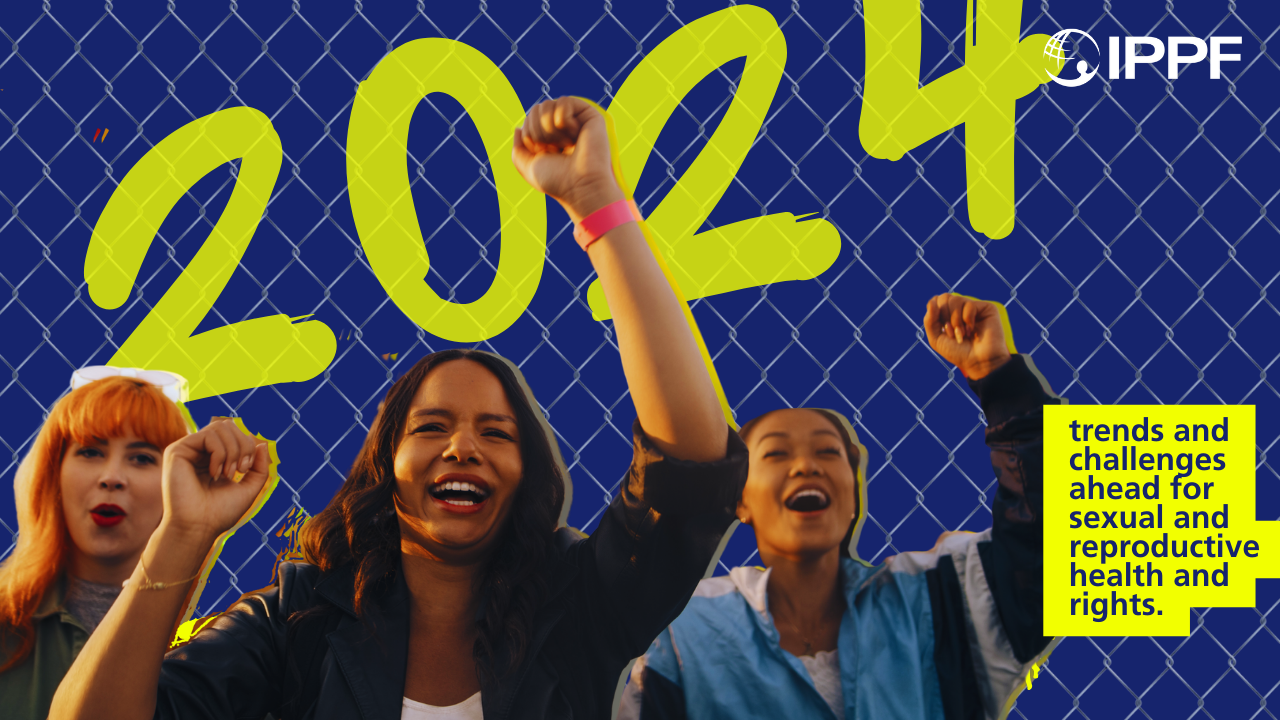
Palestine
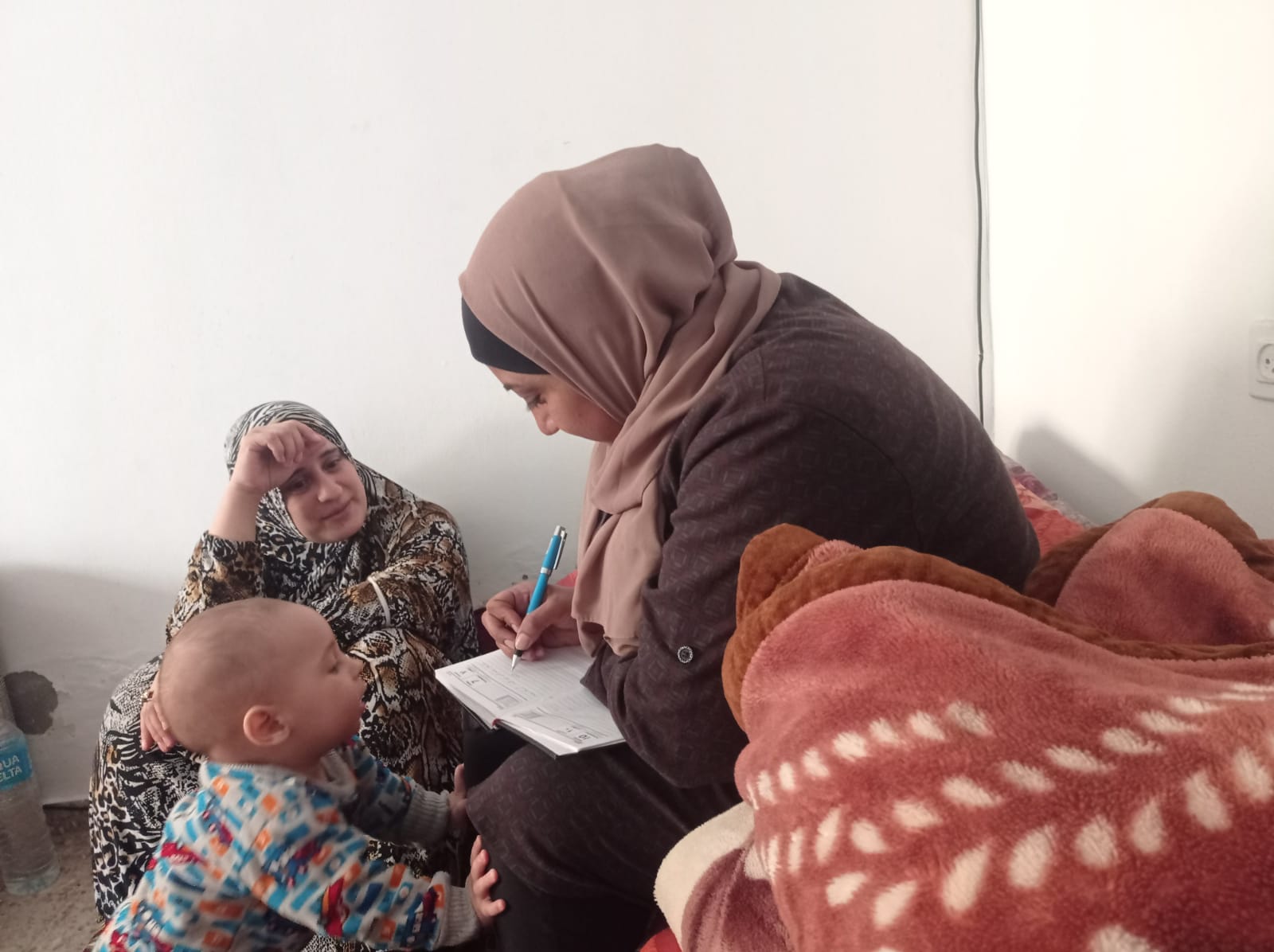
In their own words: The people providing sexual and reproductive health care under bombardment in Gaza
Week after week, heavy Israeli bombardment from air, land, and sea, has continued across most of the Gaza Strip.
Vanuatu
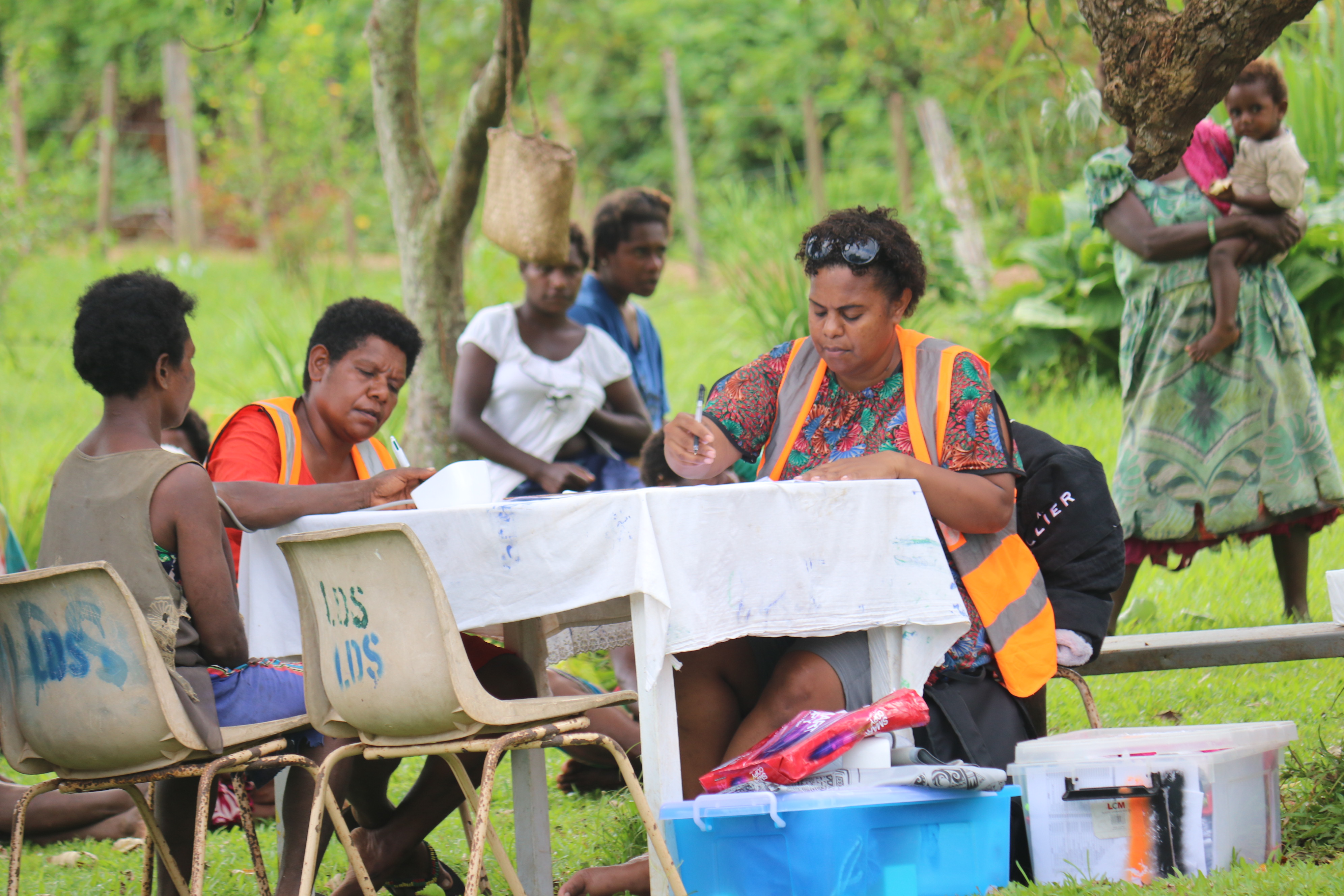
When getting to the hospital is difficult, Vanuatu mobile outreach can save lives
In the mountains of Kumera on Tanna Island, Vanuatu, the village women of Kamahaul normally spend over 10,000 Vatu ($83 USD) to travel to the nearest hospital.
Vanuatu

Sex: changing minds and winning hearts in Tanna, Vanuatu
“Very traditional.” These two words are often used to describe the people of Tanna in Vanuatu, one of the most populated islands in the small country in the Pacific.
Vanuatu
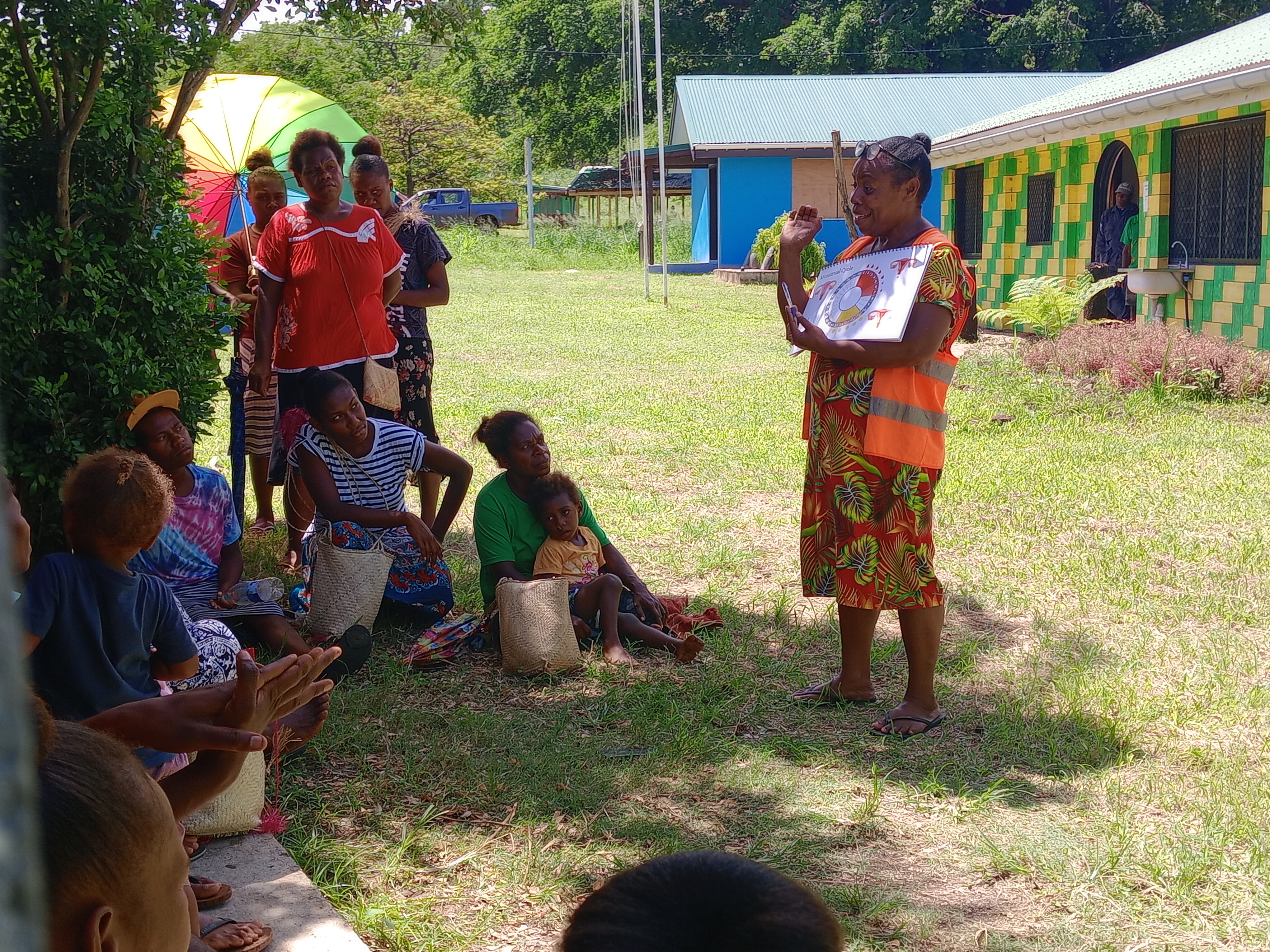
Vanuatu cyclone response: The mental health toll on humanitarian providers
Girls and women from nearby villages flock to mobile health clinics set up by the Vanuatu Family Health Association (VFHA).
Cook Islands

Trans & Proud: Being Transgender in the Cook Islands
It’s a scene like many others around the world: a loving family pour over childhood photos, giggling and reminiscing about the memories.
Cook Islands
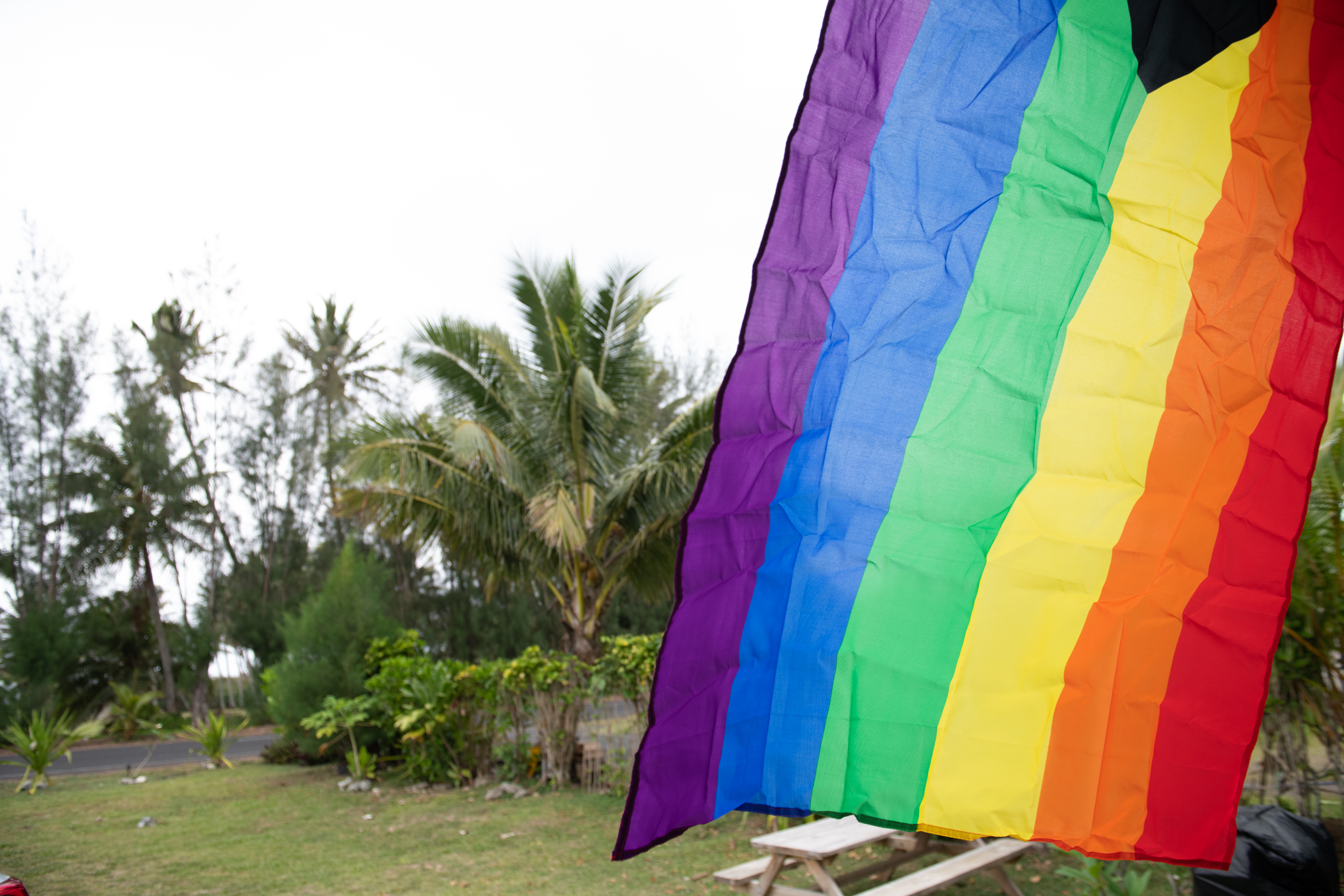
In Pictures: The activists who helped win LGBTI+ rights in the Cook Islands
The Cook Islands has removed a law that criminalizes homosexuality, in a huge victory for the local LGBTI+ community.
Filter our stories by:
- Asociación Pro-Bienestar de la Familia Colombiana
- Associação Moçambicana para Desenvolvimento da Família
- Association Béninoise pour la Promotion de la Famille
- Association Burundaise pour le Bien-Etre Familial
- Association Tunisienne de la Santé de la Reproduction
- Botswana Family Welfare Association
- Family Guidance Association of Ethiopia
- Family Planning Association of India
- Family Planning Association of Malawi
- Family Planning Association of Nepal
- Family Planning Association of Sri Lanka
- Family Planning Association of Trinidad and Tobago
- Indonesian Planned Parenthood Association
- Kiribati Family Health Association
- Mouvement Français pour le Planning Familial
- Palestinian Family Planning and Protection Association (PFPPA)
- Planned Parenthood Association of Thailand
- Planned Parenthood Association of Zambia
- Planned Parenthood Federation of America
- Pro Familia - Germany
- Reproductive & Family Health Association of Fiji
- Reproductive Health Uganda
- Vanuatu Family Health Association
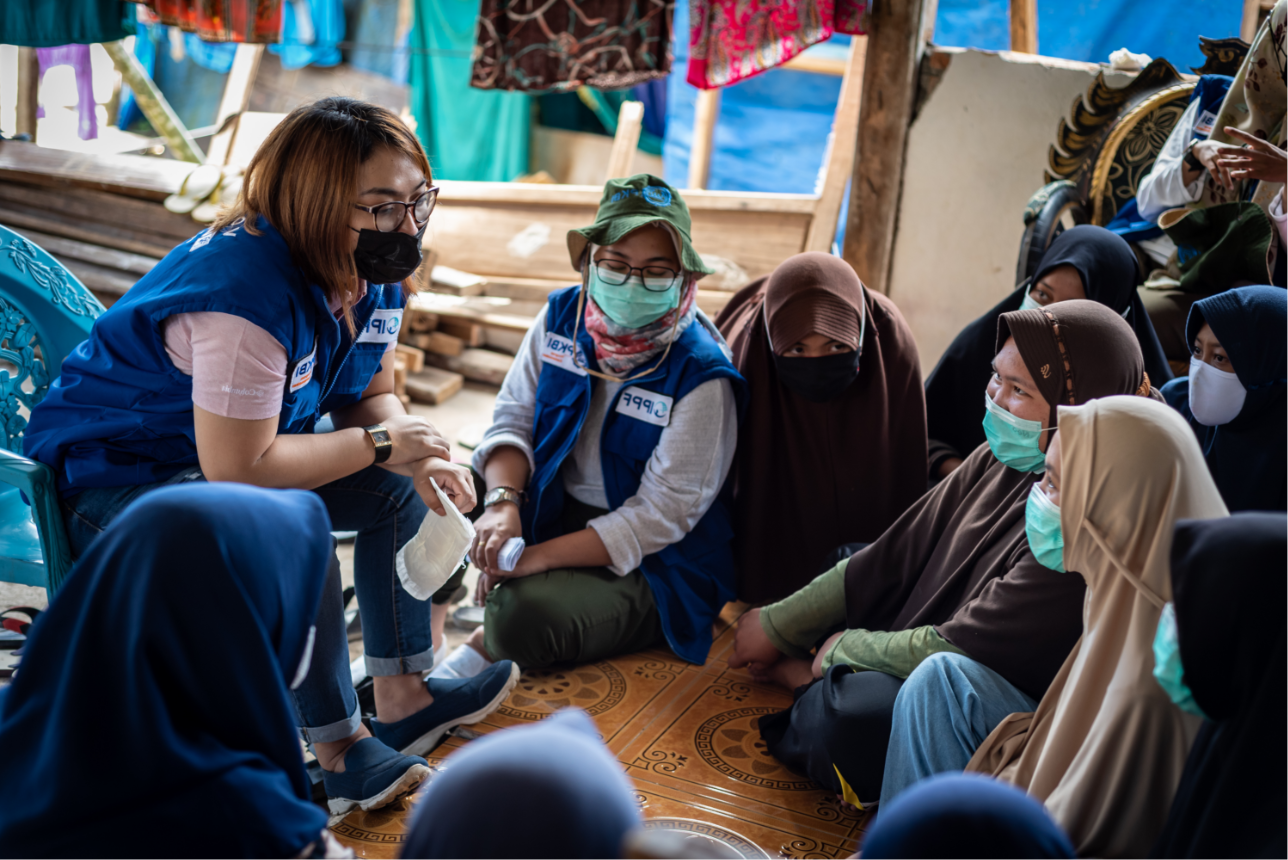
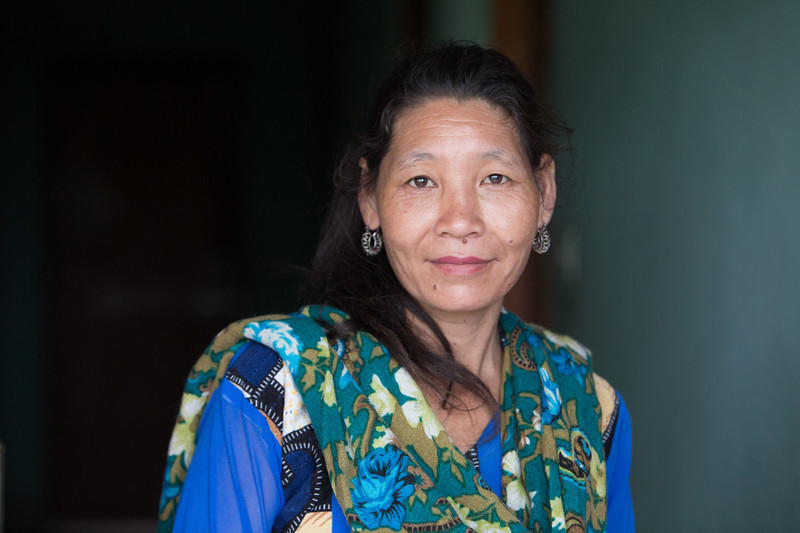
| 08 September 2017
“Attitudes of younger people to HIV are not changing fast"
“When I was 14, I was trafficked to India,” says 35-year-old Lakshmi Lama. “I was made unconscious and was taken to Mumbai. When I woke up, I didn’t even know that I had been trafficked, I didn’t know where I was.” Every year, thousands of Nepali women and girls are trafficked to India, some lured with the promise of domestic work only to find themselves in brothels or working as sex slaves. The visa-free border with India means the actual number of women and girls trafficked from Nepal is likely to be much higher. The earthquake of April 2015 also led to a surge in trafficking: women and girls living in tents or temporary housing, and young orphaned children were particularly vulnerable to traffickers. “I was in Mumbai for three years,” says Lakshmi. “Then I managed to send letters and photographs to my parents and eventually they came to Mumbai and helped rescue me from that place". During her time in India, Lakshmi contracted HIV. Life after her diagnosis was tough, Lakshmi explains. “When I was diagnosed with HIV, people used to discriminate saying, “you’ve got HIV and it might transfer to us so don’t come to our home, don’t touch us,’” she says. “It’s very challenging for people living with HIV in Nepal. People really suffer.” Today, Lakshmi lives in Banepa, a busy town around 25 kilometres east of Kathmandu. Things began to improve for her, she says, when she started attending HIV awareness classes run by Family Planning Association of Nepal (FPAN). Eventually she herself trained as an FPAN peer educator, and she now works hard visiting communities in Kavre, raising awareness about HIV prevention and treatment, and bringing people together to tackle stigma around the virus. The government needs to do far more to tackle HIV stigma in Nepal, particularly at village level, Lakshmi says, “Attitudes of younger people to HIV are not changing fast. People still say to me: ‘you have HIV, you may die soon’. There is so much stigma and discrimination in this community.” Stories Read more stories about our work with people living with HIV

| 23 April 2024
“Attitudes of younger people to HIV are not changing fast"
“When I was 14, I was trafficked to India,” says 35-year-old Lakshmi Lama. “I was made unconscious and was taken to Mumbai. When I woke up, I didn’t even know that I had been trafficked, I didn’t know where I was.” Every year, thousands of Nepali women and girls are trafficked to India, some lured with the promise of domestic work only to find themselves in brothels or working as sex slaves. The visa-free border with India means the actual number of women and girls trafficked from Nepal is likely to be much higher. The earthquake of April 2015 also led to a surge in trafficking: women and girls living in tents or temporary housing, and young orphaned children were particularly vulnerable to traffickers. “I was in Mumbai for three years,” says Lakshmi. “Then I managed to send letters and photographs to my parents and eventually they came to Mumbai and helped rescue me from that place". During her time in India, Lakshmi contracted HIV. Life after her diagnosis was tough, Lakshmi explains. “When I was diagnosed with HIV, people used to discriminate saying, “you’ve got HIV and it might transfer to us so don’t come to our home, don’t touch us,’” she says. “It’s very challenging for people living with HIV in Nepal. People really suffer.” Today, Lakshmi lives in Banepa, a busy town around 25 kilometres east of Kathmandu. Things began to improve for her, she says, when she started attending HIV awareness classes run by Family Planning Association of Nepal (FPAN). Eventually she herself trained as an FPAN peer educator, and she now works hard visiting communities in Kavre, raising awareness about HIV prevention and treatment, and bringing people together to tackle stigma around the virus. The government needs to do far more to tackle HIV stigma in Nepal, particularly at village level, Lakshmi says, “Attitudes of younger people to HIV are not changing fast. People still say to me: ‘you have HIV, you may die soon’. There is so much stigma and discrimination in this community.” Stories Read more stories about our work with people living with HIV

| 08 September 2017
'My neighbours used to discriminate against me and I suffered violence at the hands of my community'
"My husband used to work in India, and when he came back, he got ill and died," says Durga Thame. "We didn’t know that he was HIV-positive, but then then later my daughter got sick with typhoid and went to hospital and was diagnosed with HIV and died, and then I was tested and was found positive." Her story is tragic, but one all too familiar for the women living in this region. Men often travel to India in search of work, where they contract HIV and upon their return infect their wives. For Durga, the death of her husband and daughter and her own HIV positive diagnosis threw her into despair. "My neighbours used to discriminate against me … and I suffered violence at the hands of my community. Everybody used to say that they couldn’t eat whatever I cooked because they might get HIV." Then Durga heard about HIV education classes run by the Palpa branch of the Family Planning Association of Nepal (FPAN), a short bus journey up the road in Tansen, the capital of Palpa. "At those meetings, I got information about HIV," she says. "When I came back to my village, I began telling my neighbours about HIV. They came to know the facts and they realised it was a myth that HIV could be transferred by sharing food. Then they began treating me well." FPAN ran nutrition, hygiene, sanitation and livelihood classes that helped Durga turn the fortunes of her small homestead around. Durga sells goats and hens, and with these earnings supports her family – her father-in-law and her surviving daughter, who she says has not yet been tested for HIV. "I want to educate my daughter," she says. "I really hope I can provide a better education for her." Stories Read more stories about our work with people living with HIV

| 23 April 2024
'My neighbours used to discriminate against me and I suffered violence at the hands of my community'
"My husband used to work in India, and when he came back, he got ill and died," says Durga Thame. "We didn’t know that he was HIV-positive, but then then later my daughter got sick with typhoid and went to hospital and was diagnosed with HIV and died, and then I was tested and was found positive." Her story is tragic, but one all too familiar for the women living in this region. Men often travel to India in search of work, where they contract HIV and upon their return infect their wives. For Durga, the death of her husband and daughter and her own HIV positive diagnosis threw her into despair. "My neighbours used to discriminate against me … and I suffered violence at the hands of my community. Everybody used to say that they couldn’t eat whatever I cooked because they might get HIV." Then Durga heard about HIV education classes run by the Palpa branch of the Family Planning Association of Nepal (FPAN), a short bus journey up the road in Tansen, the capital of Palpa. "At those meetings, I got information about HIV," she says. "When I came back to my village, I began telling my neighbours about HIV. They came to know the facts and they realised it was a myth that HIV could be transferred by sharing food. Then they began treating me well." FPAN ran nutrition, hygiene, sanitation and livelihood classes that helped Durga turn the fortunes of her small homestead around. Durga sells goats and hens, and with these earnings supports her family – her father-in-law and her surviving daughter, who she says has not yet been tested for HIV. "I want to educate my daughter," she says. "I really hope I can provide a better education for her." Stories Read more stories about our work with people living with HIV
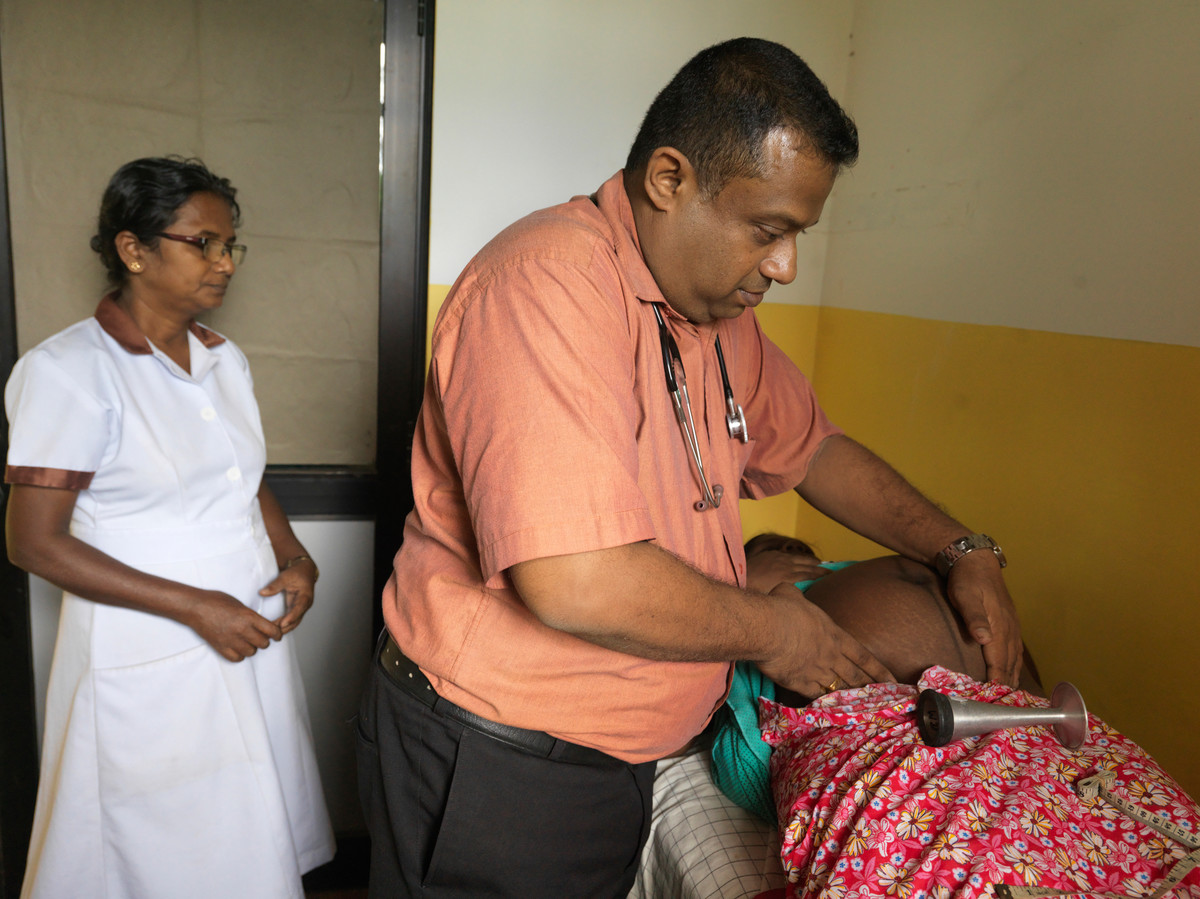
| 24 August 2017
"One pregnant woman was delivering at this time, so she had to go on a boat to dry land"
Incessant rains across Sri Lanka during May 2017 affected over half a million people in seven districts. Most affected was the Ratnapura district where over 20,000 people faced flash floods, and where 46 deaths were reported. IPPF Humanitarian, in partnership with FPA Sri Lanka, responded to this catastrophe through the distribution of over 700 dignity kits in Ratnapura Dr. Rohan Jayasuriya and midwife Chaturika Lakmale were on the ground during and after the floods providing family planning services and contraception to women affected by the disaster. “When the floods came our clinic was located on higher ground, so it wasn’t damaged. The floods finished on the 31 May 2017, and we reopened one day later on the 1 June 2017. After the floods, we arranged several special clinics just for family planning, and distributed condoms and emergency supplies of the pill to camps in case women missed their regular form of contraception like injectables, implants or IUDs. In Sri Lanka, approximately 67% of couples use family planning, 26% of which prefer IUDs” We offered condoms and emergency supply of the pill. We told women to keep one packet of the pill in their handbag, and one in their home, should they ever have to run quickly in an emergency. One pregnant woman was delivering at this time, so she had to go on a boat to dry land, and then onwards in a vehicle to the hospital. Once we reopened the clinic, two of our own midwives were unable to attend work as the floods had affected them, but I was here. It was so busy.” Stories Read more stories from Sri Lanka

| 23 April 2024
"One pregnant woman was delivering at this time, so she had to go on a boat to dry land"
Incessant rains across Sri Lanka during May 2017 affected over half a million people in seven districts. Most affected was the Ratnapura district where over 20,000 people faced flash floods, and where 46 deaths were reported. IPPF Humanitarian, in partnership with FPA Sri Lanka, responded to this catastrophe through the distribution of over 700 dignity kits in Ratnapura Dr. Rohan Jayasuriya and midwife Chaturika Lakmale were on the ground during and after the floods providing family planning services and contraception to women affected by the disaster. “When the floods came our clinic was located on higher ground, so it wasn’t damaged. The floods finished on the 31 May 2017, and we reopened one day later on the 1 June 2017. After the floods, we arranged several special clinics just for family planning, and distributed condoms and emergency supplies of the pill to camps in case women missed their regular form of contraception like injectables, implants or IUDs. In Sri Lanka, approximately 67% of couples use family planning, 26% of which prefer IUDs” We offered condoms and emergency supply of the pill. We told women to keep one packet of the pill in their handbag, and one in their home, should they ever have to run quickly in an emergency. One pregnant woman was delivering at this time, so she had to go on a boat to dry land, and then onwards in a vehicle to the hospital. Once we reopened the clinic, two of our own midwives were unable to attend work as the floods had affected them, but I was here. It was so busy.” Stories Read more stories from Sri Lanka
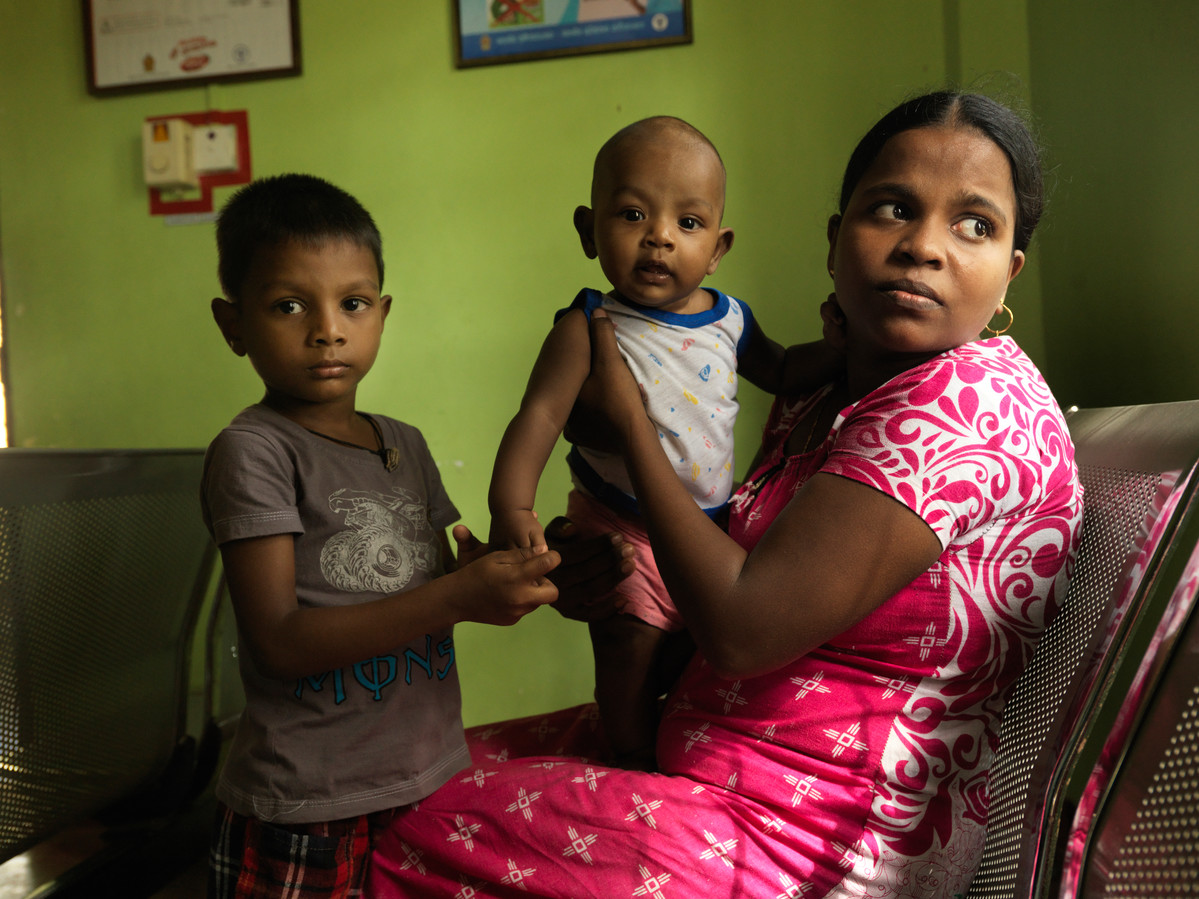
| 24 August 2017
"I looked up and saw trees falling near my neighbour’s house up the hill. My neighbours died"
Incessant rains across Sri Lanka during May 2017 affected over half a million people in seven districts. Most affected was the Ratnapura district where over 20,000 people faced flash floods. “When the flood came, my husband was feeding my eldest child and the baby was asleep in the bed. I was outside of the house. My mother was brushing her teeth outside the back of the house. I looked up and saw trees falling near my neighbour’s house up the hill. My neighbours died. I couldn’t take any possessions – I just had to run for my life. My husband took my younger child. They were all screaming. Since then, I have had my children checked here in the Ministry of Health clinic; their weight, height and nutrition. We had two houses on the one block of land, but we will only get compensation for one house. We can’t live in a tent with a baby so are currently renting a house with our own money, but for a while my mother and father slept in this clinic.” Stories Read more stories from Sri Lanka

| 23 April 2024
"I looked up and saw trees falling near my neighbour’s house up the hill. My neighbours died"
Incessant rains across Sri Lanka during May 2017 affected over half a million people in seven districts. Most affected was the Ratnapura district where over 20,000 people faced flash floods. “When the flood came, my husband was feeding my eldest child and the baby was asleep in the bed. I was outside of the house. My mother was brushing her teeth outside the back of the house. I looked up and saw trees falling near my neighbour’s house up the hill. My neighbours died. I couldn’t take any possessions – I just had to run for my life. My husband took my younger child. They were all screaming. Since then, I have had my children checked here in the Ministry of Health clinic; their weight, height and nutrition. We had two houses on the one block of land, but we will only get compensation for one house. We can’t live in a tent with a baby so are currently renting a house with our own money, but for a while my mother and father slept in this clinic.” Stories Read more stories from Sri Lanka
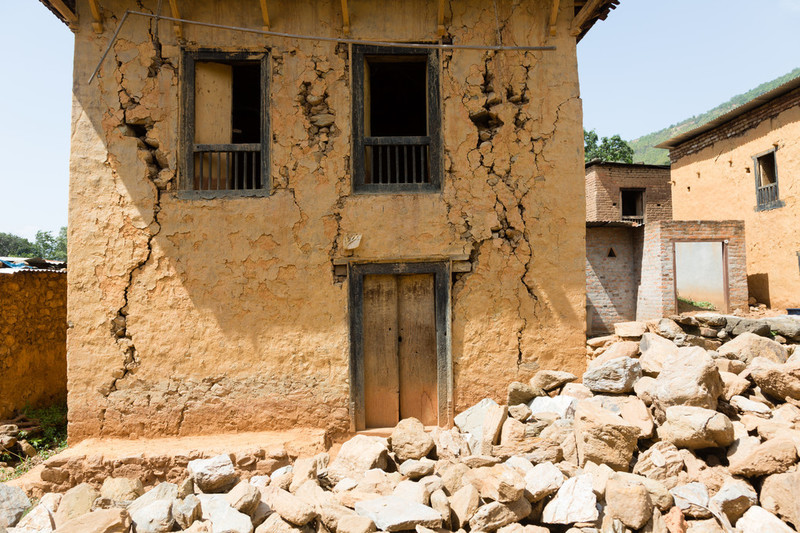
| 25 July 2017
Mobile camps provide emergency services for those unable to return home
Muna Shrestha lives with her husband and two children in Bakultar, a rambling village of mud houses, tea shacks and vegetable, miles off a main road, at the end of a long dirt track in Kavre district, a few hours west of Kathmandu. On the morning of Saturday 25 April 2015, when the earthquake struck, she and her family were cleaning the cowshed. “It was so scary,” she says. “The children were not at home: we were so worried about the children and went looking for them. They were also looking for us.” The days after the earthquake were chaotic. “The schools were closed for a month,” Muna says. “And because all our clothes and possessions were in the ruins, it was difficult to get our things.” Their children were deeply traumatised. “They became scared, and, because of this fear, they wouldn’t eat and they suffered from nausea,” Muna says. As she speaks, she gestures around the family’s old home, at the deep fissures in the mud walls. “This home is cracked by the earthquake. Our family also have another house but that was completely destroyed.” Like many families across Nepal, the Shresthas have been unable to afford to rebuild and make their old home structurally safe. It is a story now ubiquitous across Nepal: a family losing their house and possessions, scarred by trauma, and unable to return home.

| 23 April 2024
Mobile camps provide emergency services for those unable to return home
Muna Shrestha lives with her husband and two children in Bakultar, a rambling village of mud houses, tea shacks and vegetable, miles off a main road, at the end of a long dirt track in Kavre district, a few hours west of Kathmandu. On the morning of Saturday 25 April 2015, when the earthquake struck, she and her family were cleaning the cowshed. “It was so scary,” she says. “The children were not at home: we were so worried about the children and went looking for them. They were also looking for us.” The days after the earthquake were chaotic. “The schools were closed for a month,” Muna says. “And because all our clothes and possessions were in the ruins, it was difficult to get our things.” Their children were deeply traumatised. “They became scared, and, because of this fear, they wouldn’t eat and they suffered from nausea,” Muna says. As she speaks, she gestures around the family’s old home, at the deep fissures in the mud walls. “This home is cracked by the earthquake. Our family also have another house but that was completely destroyed.” Like many families across Nepal, the Shresthas have been unable to afford to rebuild and make their old home structurally safe. It is a story now ubiquitous across Nepal: a family losing their house and possessions, scarred by trauma, and unable to return home.
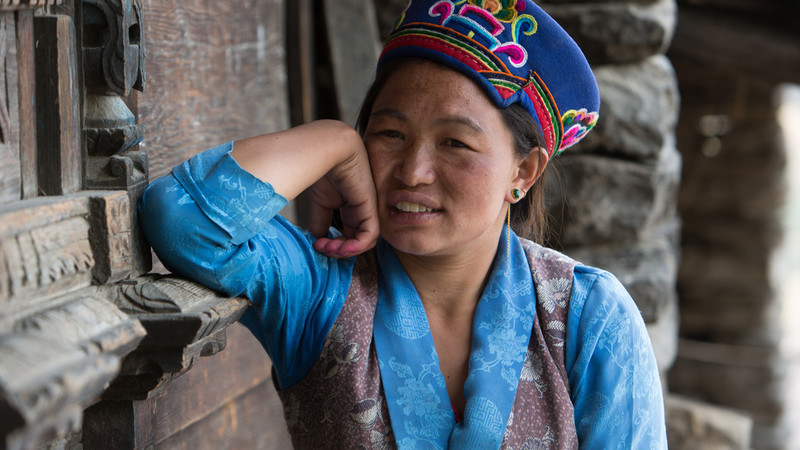
| 25 July 2017
Female volunteers take the lead to deliver life critical health advice after the earthquake
“After the earthquake, there were so many problems. So many homes were destroyed. People are still living in temporary homes because they’re unable to rebuild their homes.” Pasang Tamang lives in Gatlang, high up in the mountains of northern Nepal, 15 kilometres from the Tibetan border. It is a sublimely beautiful village of traditional three-storied houses and Buddhist shrines resting on the slopes of a mountain and thronged by lush potato fields. The 2000 or so people living here are ethnic Tamang, a people of strong cultural traditions, who live across across Nepal but particularly in the lands bordering Tibet. The earthquake of 25 April had a devastating impact on Gatlang. Most of the traditional houses in the heart of the village were damaged or destroyed, and people were forced to move into small shacks of corrugated iron and plastic, where many still live. “Seven people died and three were injured and then later died,” says Pasang. These numbers might seems small compared to some casualty numbers in Nepal, but in a tightknit village like Gatlang, the impact was felt keenly. Hundreds of people were forced into tents. “People suffered badly from the cold,” Pasang says. “Some people caught pneumonia.” At 2240 metres above sea level, nighttime temperatures in Gatlang can plunge. Pregnant women fared particularly badly: “They were unable to access nutritious food or find a warm place. They really suffered.” Pasang herself was badly injured. “During the earthquake, I was asleep in the house because I was ill,” she says. “When I felt the earthquake, I ran out of the house and while I was running I got injured, and my mouth was damaged.” Help was at hand . “After the earthquake, there were so many organisations that came to help, including FPAN,” Pasang says. As well as setting up health camps and providing a range of health care, “they provided family planning devices to people who were in need.” Hundreds of families still live in the corrugated iron and plastic sheds that were erected as a replacement for tents. The government has been slow to distribute funds, and the villagers say that any money they have received falls far short of the cost of rebuilding their old stone homes. Pasang’s house stands empty. “We will not be able to return home because the house is cracked and if there was another earthquake, it would be completely destroyed,” she says. Since the earthquake, she has begun working as a volunteer for FPAN. Her role involves travelling around villages in the area, raising awareness about different contraceptive methods and family planning. Volunteers like Pasang perform a crucial function in a region where literacy levels and a strongly patriarchal culture mean that women marry young and have to get consent from their husbands before using contraception. In this remote community, direct contact with a volunteer who can offer advice and guidance orally, and talk to women about their broader health needs, is absolutely vital.

| 23 April 2024
Female volunteers take the lead to deliver life critical health advice after the earthquake
“After the earthquake, there were so many problems. So many homes were destroyed. People are still living in temporary homes because they’re unable to rebuild their homes.” Pasang Tamang lives in Gatlang, high up in the mountains of northern Nepal, 15 kilometres from the Tibetan border. It is a sublimely beautiful village of traditional three-storied houses and Buddhist shrines resting on the slopes of a mountain and thronged by lush potato fields. The 2000 or so people living here are ethnic Tamang, a people of strong cultural traditions, who live across across Nepal but particularly in the lands bordering Tibet. The earthquake of 25 April had a devastating impact on Gatlang. Most of the traditional houses in the heart of the village were damaged or destroyed, and people were forced to move into small shacks of corrugated iron and plastic, where many still live. “Seven people died and three were injured and then later died,” says Pasang. These numbers might seems small compared to some casualty numbers in Nepal, but in a tightknit village like Gatlang, the impact was felt keenly. Hundreds of people were forced into tents. “People suffered badly from the cold,” Pasang says. “Some people caught pneumonia.” At 2240 metres above sea level, nighttime temperatures in Gatlang can plunge. Pregnant women fared particularly badly: “They were unable to access nutritious food or find a warm place. They really suffered.” Pasang herself was badly injured. “During the earthquake, I was asleep in the house because I was ill,” she says. “When I felt the earthquake, I ran out of the house and while I was running I got injured, and my mouth was damaged.” Help was at hand . “After the earthquake, there were so many organisations that came to help, including FPAN,” Pasang says. As well as setting up health camps and providing a range of health care, “they provided family planning devices to people who were in need.” Hundreds of families still live in the corrugated iron and plastic sheds that were erected as a replacement for tents. The government has been slow to distribute funds, and the villagers say that any money they have received falls far short of the cost of rebuilding their old stone homes. Pasang’s house stands empty. “We will not be able to return home because the house is cracked and if there was another earthquake, it would be completely destroyed,” she says. Since the earthquake, she has begun working as a volunteer for FPAN. Her role involves travelling around villages in the area, raising awareness about different contraceptive methods and family planning. Volunteers like Pasang perform a crucial function in a region where literacy levels and a strongly patriarchal culture mean that women marry young and have to get consent from their husbands before using contraception. In this remote community, direct contact with a volunteer who can offer advice and guidance orally, and talk to women about their broader health needs, is absolutely vital.

| 08 September 2017
“Attitudes of younger people to HIV are not changing fast"
“When I was 14, I was trafficked to India,” says 35-year-old Lakshmi Lama. “I was made unconscious and was taken to Mumbai. When I woke up, I didn’t even know that I had been trafficked, I didn’t know where I was.” Every year, thousands of Nepali women and girls are trafficked to India, some lured with the promise of domestic work only to find themselves in brothels or working as sex slaves. The visa-free border with India means the actual number of women and girls trafficked from Nepal is likely to be much higher. The earthquake of April 2015 also led to a surge in trafficking: women and girls living in tents or temporary housing, and young orphaned children were particularly vulnerable to traffickers. “I was in Mumbai for three years,” says Lakshmi. “Then I managed to send letters and photographs to my parents and eventually they came to Mumbai and helped rescue me from that place". During her time in India, Lakshmi contracted HIV. Life after her diagnosis was tough, Lakshmi explains. “When I was diagnosed with HIV, people used to discriminate saying, “you’ve got HIV and it might transfer to us so don’t come to our home, don’t touch us,’” she says. “It’s very challenging for people living with HIV in Nepal. People really suffer.” Today, Lakshmi lives in Banepa, a busy town around 25 kilometres east of Kathmandu. Things began to improve for her, she says, when she started attending HIV awareness classes run by Family Planning Association of Nepal (FPAN). Eventually she herself trained as an FPAN peer educator, and she now works hard visiting communities in Kavre, raising awareness about HIV prevention and treatment, and bringing people together to tackle stigma around the virus. The government needs to do far more to tackle HIV stigma in Nepal, particularly at village level, Lakshmi says, “Attitudes of younger people to HIV are not changing fast. People still say to me: ‘you have HIV, you may die soon’. There is so much stigma and discrimination in this community.” Stories Read more stories about our work with people living with HIV

| 23 April 2024
“Attitudes of younger people to HIV are not changing fast"
“When I was 14, I was trafficked to India,” says 35-year-old Lakshmi Lama. “I was made unconscious and was taken to Mumbai. When I woke up, I didn’t even know that I had been trafficked, I didn’t know where I was.” Every year, thousands of Nepali women and girls are trafficked to India, some lured with the promise of domestic work only to find themselves in brothels or working as sex slaves. The visa-free border with India means the actual number of women and girls trafficked from Nepal is likely to be much higher. The earthquake of April 2015 also led to a surge in trafficking: women and girls living in tents or temporary housing, and young orphaned children were particularly vulnerable to traffickers. “I was in Mumbai for three years,” says Lakshmi. “Then I managed to send letters and photographs to my parents and eventually they came to Mumbai and helped rescue me from that place". During her time in India, Lakshmi contracted HIV. Life after her diagnosis was tough, Lakshmi explains. “When I was diagnosed with HIV, people used to discriminate saying, “you’ve got HIV and it might transfer to us so don’t come to our home, don’t touch us,’” she says. “It’s very challenging for people living with HIV in Nepal. People really suffer.” Today, Lakshmi lives in Banepa, a busy town around 25 kilometres east of Kathmandu. Things began to improve for her, she says, when she started attending HIV awareness classes run by Family Planning Association of Nepal (FPAN). Eventually she herself trained as an FPAN peer educator, and she now works hard visiting communities in Kavre, raising awareness about HIV prevention and treatment, and bringing people together to tackle stigma around the virus. The government needs to do far more to tackle HIV stigma in Nepal, particularly at village level, Lakshmi says, “Attitudes of younger people to HIV are not changing fast. People still say to me: ‘you have HIV, you may die soon’. There is so much stigma and discrimination in this community.” Stories Read more stories about our work with people living with HIV

| 08 September 2017
'My neighbours used to discriminate against me and I suffered violence at the hands of my community'
"My husband used to work in India, and when he came back, he got ill and died," says Durga Thame. "We didn’t know that he was HIV-positive, but then then later my daughter got sick with typhoid and went to hospital and was diagnosed with HIV and died, and then I was tested and was found positive." Her story is tragic, but one all too familiar for the women living in this region. Men often travel to India in search of work, where they contract HIV and upon their return infect their wives. For Durga, the death of her husband and daughter and her own HIV positive diagnosis threw her into despair. "My neighbours used to discriminate against me … and I suffered violence at the hands of my community. Everybody used to say that they couldn’t eat whatever I cooked because they might get HIV." Then Durga heard about HIV education classes run by the Palpa branch of the Family Planning Association of Nepal (FPAN), a short bus journey up the road in Tansen, the capital of Palpa. "At those meetings, I got information about HIV," she says. "When I came back to my village, I began telling my neighbours about HIV. They came to know the facts and they realised it was a myth that HIV could be transferred by sharing food. Then they began treating me well." FPAN ran nutrition, hygiene, sanitation and livelihood classes that helped Durga turn the fortunes of her small homestead around. Durga sells goats and hens, and with these earnings supports her family – her father-in-law and her surviving daughter, who she says has not yet been tested for HIV. "I want to educate my daughter," she says. "I really hope I can provide a better education for her." Stories Read more stories about our work with people living with HIV

| 23 April 2024
'My neighbours used to discriminate against me and I suffered violence at the hands of my community'
"My husband used to work in India, and when he came back, he got ill and died," says Durga Thame. "We didn’t know that he was HIV-positive, but then then later my daughter got sick with typhoid and went to hospital and was diagnosed with HIV and died, and then I was tested and was found positive." Her story is tragic, but one all too familiar for the women living in this region. Men often travel to India in search of work, where they contract HIV and upon their return infect their wives. For Durga, the death of her husband and daughter and her own HIV positive diagnosis threw her into despair. "My neighbours used to discriminate against me … and I suffered violence at the hands of my community. Everybody used to say that they couldn’t eat whatever I cooked because they might get HIV." Then Durga heard about HIV education classes run by the Palpa branch of the Family Planning Association of Nepal (FPAN), a short bus journey up the road in Tansen, the capital of Palpa. "At those meetings, I got information about HIV," she says. "When I came back to my village, I began telling my neighbours about HIV. They came to know the facts and they realised it was a myth that HIV could be transferred by sharing food. Then they began treating me well." FPAN ran nutrition, hygiene, sanitation and livelihood classes that helped Durga turn the fortunes of her small homestead around. Durga sells goats and hens, and with these earnings supports her family – her father-in-law and her surviving daughter, who she says has not yet been tested for HIV. "I want to educate my daughter," she says. "I really hope I can provide a better education for her." Stories Read more stories about our work with people living with HIV

| 24 August 2017
"One pregnant woman was delivering at this time, so she had to go on a boat to dry land"
Incessant rains across Sri Lanka during May 2017 affected over half a million people in seven districts. Most affected was the Ratnapura district where over 20,000 people faced flash floods, and where 46 deaths were reported. IPPF Humanitarian, in partnership with FPA Sri Lanka, responded to this catastrophe through the distribution of over 700 dignity kits in Ratnapura Dr. Rohan Jayasuriya and midwife Chaturika Lakmale were on the ground during and after the floods providing family planning services and contraception to women affected by the disaster. “When the floods came our clinic was located on higher ground, so it wasn’t damaged. The floods finished on the 31 May 2017, and we reopened one day later on the 1 June 2017. After the floods, we arranged several special clinics just for family planning, and distributed condoms and emergency supplies of the pill to camps in case women missed their regular form of contraception like injectables, implants or IUDs. In Sri Lanka, approximately 67% of couples use family planning, 26% of which prefer IUDs” We offered condoms and emergency supply of the pill. We told women to keep one packet of the pill in their handbag, and one in their home, should they ever have to run quickly in an emergency. One pregnant woman was delivering at this time, so she had to go on a boat to dry land, and then onwards in a vehicle to the hospital. Once we reopened the clinic, two of our own midwives were unable to attend work as the floods had affected them, but I was here. It was so busy.” Stories Read more stories from Sri Lanka

| 23 April 2024
"One pregnant woman was delivering at this time, so she had to go on a boat to dry land"
Incessant rains across Sri Lanka during May 2017 affected over half a million people in seven districts. Most affected was the Ratnapura district where over 20,000 people faced flash floods, and where 46 deaths were reported. IPPF Humanitarian, in partnership with FPA Sri Lanka, responded to this catastrophe through the distribution of over 700 dignity kits in Ratnapura Dr. Rohan Jayasuriya and midwife Chaturika Lakmale were on the ground during and after the floods providing family planning services and contraception to women affected by the disaster. “When the floods came our clinic was located on higher ground, so it wasn’t damaged. The floods finished on the 31 May 2017, and we reopened one day later on the 1 June 2017. After the floods, we arranged several special clinics just for family planning, and distributed condoms and emergency supplies of the pill to camps in case women missed their regular form of contraception like injectables, implants or IUDs. In Sri Lanka, approximately 67% of couples use family planning, 26% of which prefer IUDs” We offered condoms and emergency supply of the pill. We told women to keep one packet of the pill in their handbag, and one in their home, should they ever have to run quickly in an emergency. One pregnant woman was delivering at this time, so she had to go on a boat to dry land, and then onwards in a vehicle to the hospital. Once we reopened the clinic, two of our own midwives were unable to attend work as the floods had affected them, but I was here. It was so busy.” Stories Read more stories from Sri Lanka

| 24 August 2017
"I looked up and saw trees falling near my neighbour’s house up the hill. My neighbours died"
Incessant rains across Sri Lanka during May 2017 affected over half a million people in seven districts. Most affected was the Ratnapura district where over 20,000 people faced flash floods. “When the flood came, my husband was feeding my eldest child and the baby was asleep in the bed. I was outside of the house. My mother was brushing her teeth outside the back of the house. I looked up and saw trees falling near my neighbour’s house up the hill. My neighbours died. I couldn’t take any possessions – I just had to run for my life. My husband took my younger child. They were all screaming. Since then, I have had my children checked here in the Ministry of Health clinic; their weight, height and nutrition. We had two houses on the one block of land, but we will only get compensation for one house. We can’t live in a tent with a baby so are currently renting a house with our own money, but for a while my mother and father slept in this clinic.” Stories Read more stories from Sri Lanka

| 23 April 2024
"I looked up and saw trees falling near my neighbour’s house up the hill. My neighbours died"
Incessant rains across Sri Lanka during May 2017 affected over half a million people in seven districts. Most affected was the Ratnapura district where over 20,000 people faced flash floods. “When the flood came, my husband was feeding my eldest child and the baby was asleep in the bed. I was outside of the house. My mother was brushing her teeth outside the back of the house. I looked up and saw trees falling near my neighbour’s house up the hill. My neighbours died. I couldn’t take any possessions – I just had to run for my life. My husband took my younger child. They were all screaming. Since then, I have had my children checked here in the Ministry of Health clinic; their weight, height and nutrition. We had two houses on the one block of land, but we will only get compensation for one house. We can’t live in a tent with a baby so are currently renting a house with our own money, but for a while my mother and father slept in this clinic.” Stories Read more stories from Sri Lanka

| 25 July 2017
Mobile camps provide emergency services for those unable to return home
Muna Shrestha lives with her husband and two children in Bakultar, a rambling village of mud houses, tea shacks and vegetable, miles off a main road, at the end of a long dirt track in Kavre district, a few hours west of Kathmandu. On the morning of Saturday 25 April 2015, when the earthquake struck, she and her family were cleaning the cowshed. “It was so scary,” she says. “The children were not at home: we were so worried about the children and went looking for them. They were also looking for us.” The days after the earthquake were chaotic. “The schools were closed for a month,” Muna says. “And because all our clothes and possessions were in the ruins, it was difficult to get our things.” Their children were deeply traumatised. “They became scared, and, because of this fear, they wouldn’t eat and they suffered from nausea,” Muna says. As she speaks, she gestures around the family’s old home, at the deep fissures in the mud walls. “This home is cracked by the earthquake. Our family also have another house but that was completely destroyed.” Like many families across Nepal, the Shresthas have been unable to afford to rebuild and make their old home structurally safe. It is a story now ubiquitous across Nepal: a family losing their house and possessions, scarred by trauma, and unable to return home.

| 23 April 2024
Mobile camps provide emergency services for those unable to return home
Muna Shrestha lives with her husband and two children in Bakultar, a rambling village of mud houses, tea shacks and vegetable, miles off a main road, at the end of a long dirt track in Kavre district, a few hours west of Kathmandu. On the morning of Saturday 25 April 2015, when the earthquake struck, she and her family were cleaning the cowshed. “It was so scary,” she says. “The children were not at home: we were so worried about the children and went looking for them. They were also looking for us.” The days after the earthquake were chaotic. “The schools were closed for a month,” Muna says. “And because all our clothes and possessions were in the ruins, it was difficult to get our things.” Their children were deeply traumatised. “They became scared, and, because of this fear, they wouldn’t eat and they suffered from nausea,” Muna says. As she speaks, she gestures around the family’s old home, at the deep fissures in the mud walls. “This home is cracked by the earthquake. Our family also have another house but that was completely destroyed.” Like many families across Nepal, the Shresthas have been unable to afford to rebuild and make their old home structurally safe. It is a story now ubiquitous across Nepal: a family losing their house and possessions, scarred by trauma, and unable to return home.

| 25 July 2017
Female volunteers take the lead to deliver life critical health advice after the earthquake
“After the earthquake, there were so many problems. So many homes were destroyed. People are still living in temporary homes because they’re unable to rebuild their homes.” Pasang Tamang lives in Gatlang, high up in the mountains of northern Nepal, 15 kilometres from the Tibetan border. It is a sublimely beautiful village of traditional three-storied houses and Buddhist shrines resting on the slopes of a mountain and thronged by lush potato fields. The 2000 or so people living here are ethnic Tamang, a people of strong cultural traditions, who live across across Nepal but particularly in the lands bordering Tibet. The earthquake of 25 April had a devastating impact on Gatlang. Most of the traditional houses in the heart of the village were damaged or destroyed, and people were forced to move into small shacks of corrugated iron and plastic, where many still live. “Seven people died and three were injured and then later died,” says Pasang. These numbers might seems small compared to some casualty numbers in Nepal, but in a tightknit village like Gatlang, the impact was felt keenly. Hundreds of people were forced into tents. “People suffered badly from the cold,” Pasang says. “Some people caught pneumonia.” At 2240 metres above sea level, nighttime temperatures in Gatlang can plunge. Pregnant women fared particularly badly: “They were unable to access nutritious food or find a warm place. They really suffered.” Pasang herself was badly injured. “During the earthquake, I was asleep in the house because I was ill,” she says. “When I felt the earthquake, I ran out of the house and while I was running I got injured, and my mouth was damaged.” Help was at hand . “After the earthquake, there were so many organisations that came to help, including FPAN,” Pasang says. As well as setting up health camps and providing a range of health care, “they provided family planning devices to people who were in need.” Hundreds of families still live in the corrugated iron and plastic sheds that were erected as a replacement for tents. The government has been slow to distribute funds, and the villagers say that any money they have received falls far short of the cost of rebuilding their old stone homes. Pasang’s house stands empty. “We will not be able to return home because the house is cracked and if there was another earthquake, it would be completely destroyed,” she says. Since the earthquake, she has begun working as a volunteer for FPAN. Her role involves travelling around villages in the area, raising awareness about different contraceptive methods and family planning. Volunteers like Pasang perform a crucial function in a region where literacy levels and a strongly patriarchal culture mean that women marry young and have to get consent from their husbands before using contraception. In this remote community, direct contact with a volunteer who can offer advice and guidance orally, and talk to women about their broader health needs, is absolutely vital.

| 23 April 2024
Female volunteers take the lead to deliver life critical health advice after the earthquake
“After the earthquake, there were so many problems. So many homes were destroyed. People are still living in temporary homes because they’re unable to rebuild their homes.” Pasang Tamang lives in Gatlang, high up in the mountains of northern Nepal, 15 kilometres from the Tibetan border. It is a sublimely beautiful village of traditional three-storied houses and Buddhist shrines resting on the slopes of a mountain and thronged by lush potato fields. The 2000 or so people living here are ethnic Tamang, a people of strong cultural traditions, who live across across Nepal but particularly in the lands bordering Tibet. The earthquake of 25 April had a devastating impact on Gatlang. Most of the traditional houses in the heart of the village were damaged or destroyed, and people were forced to move into small shacks of corrugated iron and plastic, where many still live. “Seven people died and three were injured and then later died,” says Pasang. These numbers might seems small compared to some casualty numbers in Nepal, but in a tightknit village like Gatlang, the impact was felt keenly. Hundreds of people were forced into tents. “People suffered badly from the cold,” Pasang says. “Some people caught pneumonia.” At 2240 metres above sea level, nighttime temperatures in Gatlang can plunge. Pregnant women fared particularly badly: “They were unable to access nutritious food or find a warm place. They really suffered.” Pasang herself was badly injured. “During the earthquake, I was asleep in the house because I was ill,” she says. “When I felt the earthquake, I ran out of the house and while I was running I got injured, and my mouth was damaged.” Help was at hand . “After the earthquake, there were so many organisations that came to help, including FPAN,” Pasang says. As well as setting up health camps and providing a range of health care, “they provided family planning devices to people who were in need.” Hundreds of families still live in the corrugated iron and plastic sheds that were erected as a replacement for tents. The government has been slow to distribute funds, and the villagers say that any money they have received falls far short of the cost of rebuilding their old stone homes. Pasang’s house stands empty. “We will not be able to return home because the house is cracked and if there was another earthquake, it would be completely destroyed,” she says. Since the earthquake, she has begun working as a volunteer for FPAN. Her role involves travelling around villages in the area, raising awareness about different contraceptive methods and family planning. Volunteers like Pasang perform a crucial function in a region where literacy levels and a strongly patriarchal culture mean that women marry young and have to get consent from their husbands before using contraception. In this remote community, direct contact with a volunteer who can offer advice and guidance orally, and talk to women about their broader health needs, is absolutely vital.







